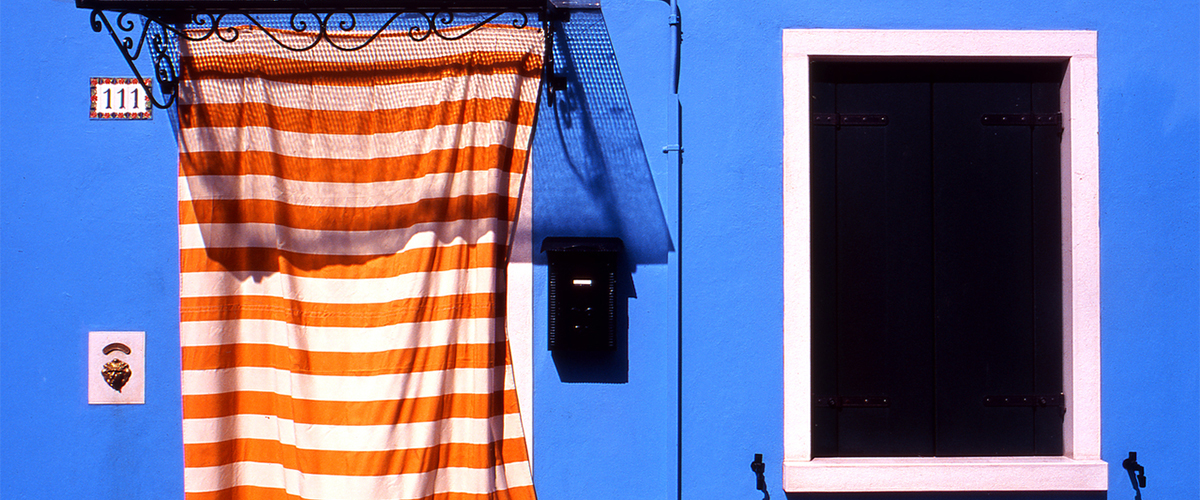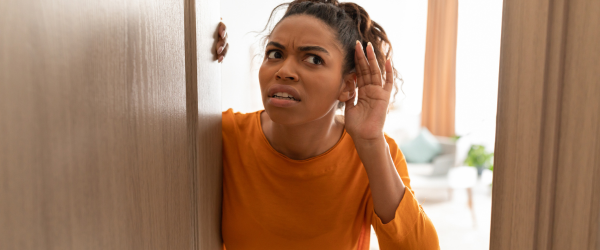Having the wonderfully creative job of cam model is exciting, fun — and sometimes loud! On cam, we may have personal conversations with guests, vocal orgasms or be yelling out someone’s name for a custom video. We all want to let the good times roll, but some of us need to be discreet about it.
The first thing that comes to mind when we think of how to reduce noise is “soundproofing” our cam space, but soundproofing is a lot more invasive than it sounds. It’s usually achieved with expensive construction or substantial modifications to existing structures, and that’s a large project. Since construction overhauls are generally off the table, what we can more easily, affordably and safely do is change the inside of our spaces so that sound waves have less hard surfaces to bounce off of. Simply put, you can dampen sounds by adding soft and heavy things to the room.
Prep for your noise reduction project
Before starting your noise reduction project, first take some time to assess your space.
You will need a measuring tape to measure doors, walls and windows, as well as a way to store the measurements for later. Making a note in your phone is handy because you’ll likely have your phone with you when you go shopping.
It’s also useful to take pictures of anything else in your space you’d want to reference while shopping. After you’ve measured, prioritize your tasks with a list. Plan to start working on the areas of the room where sound most easily escapes or reverberates — shared walls with other occupied rooms, windows and doors are great places to start – then build up from there.
Finally, think about how much money you are willing to spend on this project. If you want to cut costs, consider asking friends and family for donations. Shop at thrift stores, consignment shops and tag sales to score previously owned items for less – you never know what you will find! Just don’t forget to keep the aesthetic and color scheme of your room in mind. No one should have to sacrifice peace of mind for drab decor.
Once you’ve mapped out your noise reduction plan, start acquiring the following items in any order. You will likely need to fasten materials to your walls, but how you do that is up to you. You can use nails, thumbtacks, adhesive hooks, adhesive strips or anything else. Check with your landlord or review local laws if you rent and plan on making holes in your wall. Some properties consider nailing into the wall as “normal wear and tear.” Others do not.
Soundproofing, spot by spot
The following information is presented in sections based on the common parts of a room. Since not all rooms have the same features this format is intended to produce simplicity when planning.
Doors
Residential doors within a home, such as a bedroom door, are not great at blocking sound. There are usually significant gaps around the doorframe where sound and light can escape, while the doors themselves are often semi-hollow inside.
Obtaining a draft blocker will help block the space between the floor and the bottom of your door and thus muffle sound as well. Choose a draft blocker filled with sand to increase the noise reduction properties. If you feel comfortable with a sewing machine, you could make your own draft blocker and fill it with your choice of materials. Here’s some instructions.
In addition to a well-made draft stopper, door curtains are another way to muffle sounds, cover gaps and soften the hard surface of the door. Hang a regular blackout curtain over the door to your cam space high enough so it does not drag on the ground. If you want something heavier than a blackout curtain covering your door, you can hang a moving blanket instead. Just remember to fasten it so that you can easily enter and exit the room in emergency.
Here’s an example of some inexpensive blackout curtains, made and sold by Wal-Mart. Their Mainstays in-house brand makes a lot of cute stuff.
Windows
If your cam space has windows, lucky you! It’s always nice to be able to look outside.
Unfortunately, windows are huge offenders when it comes to noise reduction. Window frames are typically drafty, and the window panes themselves conduct sound very well. Fortunately, there are a few great options to address this.
The first option is to buy a plastic film insulation kit for your windows. The kits are generally $15 or less and require a heat source such as a hair dryer to install, so plan ahead before purchasing. Here’s an example from DuckBrand.
The second option is to put bubble wrap on your windows. According to various blogs, all you need is bubble wrap and a spray bottle of water to achieve this inexpensive insulation method. Purchase bubble wrap with medium or large bubbles, measure the size of the window pane and cut the bubble wrap to size. Spray the window pane with water and stick the bubble wrap to it with the bubbles side facing away from you, and you’re done! This will soften the surface of the windows, insulate them and give you privacy without blocking too much light.
Here’s an inexpensive bubble wrap option, also from DuckBrand.
The last option for windows is to purchase and install rope caulk around your window frame. Rope caulk is a malleable material that can be easily applied by hand to the cracks and seams around a window. The material stays soft and is easy to remove as needed, which makes it a great option for renters. DuckBrand makes a good product here too.
After you’ve modified your windows, hang blackout curtains in colors that you like for a final light and sound blocking touch. I recommend hanging two panels of blackout curtains per window instead of one to add extra noise absorbing material to your room.
Look how cute this is!
Walls
The walls in the room where you cam will be an important area to work on. You can line the walls with egg crate foam, multi-purpose foam or moving blankets to give them a soft surface, but be aware that those methods tend to be drab colored without some creative additions.
To keep with the design of your space you can purchase tapestries, wholesale fabric, blank canvas sheets or bed sheets to hang on top of the wall coverings. Get creative with how you beautify the walls! (Remember: Do not cover any heat sources, electrical outlets or cords when installing wall hangings.)
A different way to reduce sound transmission around a wall area is to install a bookshelf with as many large books as you can fit on it. If you need books for this purpose but don’t have any, you can find them cheaply at thrift stores. Choose dictionaries, encyclopedias and text books for their large size and weight. Don’t forget to ask family and friends for any books they want to pass on to a loving home!
Next level egg crate soundproofing!
Floors
If you have a carpet in your cam space then you’re in a good spot already, but if it’s thin and old, consider adding throw rugs on top of the carpeted area where you spend the most time.
If your floor is not carpeted, you can use rugs, hallway runners, scrap carpet pieces or interlocking foam floor pads to soften it. If you have a rug but nothing between the rug and the floor, look into purchasing a density pad. Density pads add more softness to the floor and help to keep the rug in place, but they also add an extra layer of noise reducing material.
Flooring materials can be pricey, so mix and match different products according to your floor space.
Super fancy, but check out those flooring ideas!
Ceiling
Putting a rug on the ceiling sounds odd, but it does serve a purpose.
If you have upstairs neighbors and the floors are thin, you can reduce sounds from above by adding egg crate foam, fabric, rugs or blankets to the ceiling. Cut the fabric to fit the area you are covering, and be mindful of any ceiling fans or lights. Do not cover any cords or electrical parts with any material you put down.
Other Considerations
Investing in a white noise machine will be a valuable tool to working with peace of mind. White noise is a random combination of sound frequencies that many people find soothing. The whir of a white noise machine offers privacy because it helps to obscure the frequencies of our voices when we talk. Placing it directly outside of your cam space will help cover up the sounds you make and create an ambient atmosphere, but don’t use it in your cam room as it will likely be detected by your microphone and heard on cam.
Here’s a standard, inexpensive white noise machine option from HoMedics.
There you have it. Try all this ideas, or even just one or two. Every little bit will help dampen sounds — both coming into and going out of — your room.
If you try any tips from this article, let us know on Twitter!
—
Anouk Gilmour is a registered yoga teacher at the 200-hour level. Eight years after trying camming in college, she is an amateur adult model again. Find her on Twitter at @anoukgilmour.
Image via Max Bogaert.











Great information! We often spend time concerned with the visual that we forget to tend to the audio aspect of cam space and the ultimate quality experience for our viewers. 🙂
Thank you for reading and taking the time to leave such a nice comment! Writing this article was a lot of fun and I’m happy you enjoyed the information. 🙂